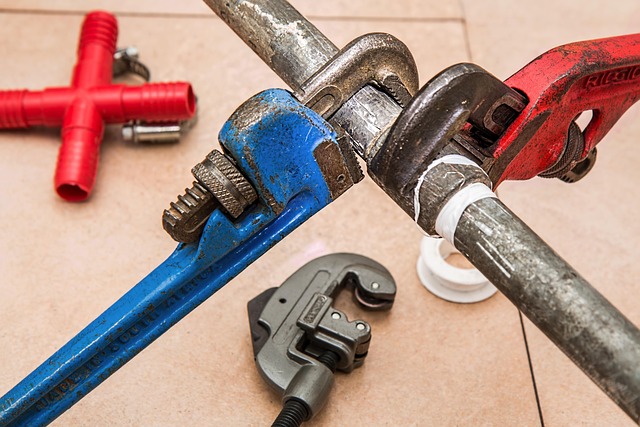Practical Locksmith Services & Professional Training
Explore how locksmiths protect homes, businesses, and vehicles with services that go beyond emergency lockouts. This guide covers common locksmith offerings, how locks and keys operate, typical training paths for the trade, and ways locksmiths enhance security through upgrades and access control. Ideal for homeowners shopping for locksmith help or anyone considering a career in locksmithing, it explains installation, key cutting and programming, electronic lock systems, master-key design, and security assessment tips to make smarter decisions.

Practical Locksmith Services & Professional Training
What locksmiths do day to day
Locksmiths handle a broad range of tasks centered on securing access and resolving lock-related problems. Their work includes non-destructive entry for locked doors, repairing or swapping out damaged hardware, and fitting new locksets on doors and windows. For properties with many openings, locksmiths design and implement master-key systems that let managers control access efficiently. Automotive locksmith services cover vehicle entry, key replacement, and the programming of transponder keys or remote fobs. Many locksmiths also service safes, mailbox locks, and electronic access-control devices. Because calls often arrive at unpredictable times, field technicians typically carry blanks, hand tools, portable cutting equipment, and diagnostic devices for on-site work.
How locksmiths learn the trade
Training mixes hands-on skill-building with technical study. New entrants commonly join apprenticeships or make use of vocational programs that teach the fundamentals of lock mechanisms, key cutting, and the electrical elements increasingly found in modern systems. Typical coursework and training modules include lock anatomy, safe handling, legal and ethical guidelines, and troubleshooting for mechanical and electronic failures. Some manufacturers run product-specific classes to acquaint locksmiths with proprietary hardware and programming routines. Continuous learning is essential because smart locks, networked access systems, and evolving industry standards demand up-to-date techniques and software knowledge.
Core lock types and how they work
Understanding basic lock designs helps when choosing security levels and diagnosing problems. Mechanical locks rely on physical components aligning to permit rotation of a cylinder. Common designs are pin-tumbler locks, wafer locks, and disc-detainer systems; each uses different internal parts and tolerances to resist manipulation. Deadbolts are mechanically simple yet offer strong resistance to forced entry when correctly installed. Electronic and smart locks combine mechanical elements with electromechanical actuators such as motors or solenoids. A microcontroller handles authentication, which can be based on PIN codes, Bluetooth, wireless credentials, or networked access lists. Knowing what type of lock you have or want helps a locksmith recommend appropriate maintenance, repair, or upgrades.
Keys: cutting, duplication, programming, and rekeying
Conventional keys are created by cutting a blank to match a lock’s profile using manual or automatic key machines. High-security mechanical keys often use restricted keyways or additional side milling, requiring specialized blanks and control procedures. Automotive keys frequently contain transponder chips and remote functions that need programming to synchronize with a vehicle’s immobilizer. That programming is performed with vehicle diagnostic tools or software supplied by manufacturers. While duplicating a standard house key is usually quick, rekeying a lock is often the preferred security step when key control is in question: the locksmith replaces the internal pins so older keys no longer work, avoiding the expense of a full lock replacement.
How locksmiths add value to property security
Beyond fixing problems, locksmiths provide advisory services and design layered security solutions tailored to a property. Upgrades might include installing high-security cylinders that resist picking and drilling, reinforcing door frames and strikes to withstand forced entry, or integrating locks with alarm and monitoring systems. For commercial sites, locksmiths can create master-key hierarchies and advise on strict key-control practices to limit unauthorized duplication. Electronic access systems can be configured to produce audit trails and access schedules, giving managers oversight of who enters and when. Effective security blends quality hardware, correct installation, and disciplined user behavior, such as rotating access codes, controlling key distribution, and maintaining up-to-date firmware on smart devices.
| Service | Typical cost range |
|---|---|
| Residential rekeying | $50 - $150 per lock |
| New lock installation | $75 - $300 (depends on hardware) |
| Emergency lockout service | $50 - $150 (varies by time/location) |
| Automotive key cutting/programming | $100 - $400+ |
Cost disclaimer: Prices are estimates and can vary significantly by region, complexity, and specific provider. Always request a written estimate before work begins.
Choosing a locksmith and what to expect
When selecting a locksmith, look for credentials, verifiable experience with the locks and systems you own, and familiarity with current electronic and smart technologies. Ask about insurance and whether the company provides a written receipt or invoice that lists parts and labor. For specialized jobs like safe servicing or vehicle key programming, confirm the technician is trained on that brand or model. Good locksmiths will explain options, provide clear pricing, and follow ethical practices, including refusing to open locks without appropriate proof of ownership when required by local regulations.
Final considerations for homeowners and aspiring locksmiths
Understanding the scope of locksmith services helps homeowners and managers make better choices about locks, key control, and security upgrades. For prospective locksmiths, the trade blends mechanical craftsmanship with growing electrical and software skills, offering a steady demand for competent, trustworthy technicians. Whether you need service now or are planning longer-term security improvements, prioritize certified providers with contemporary training and a track record of reliable, professional work.






